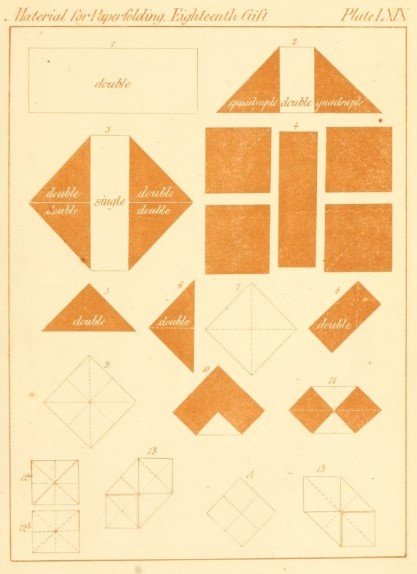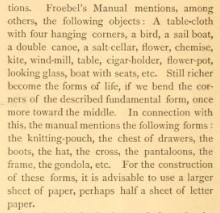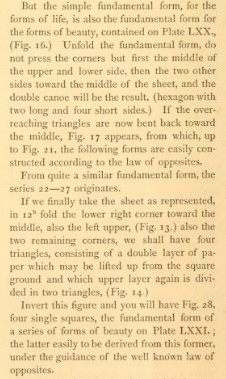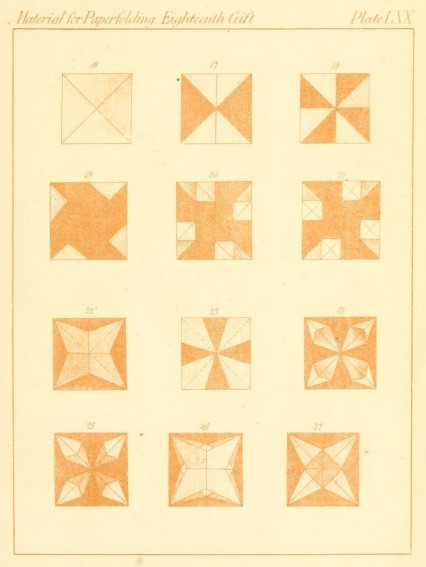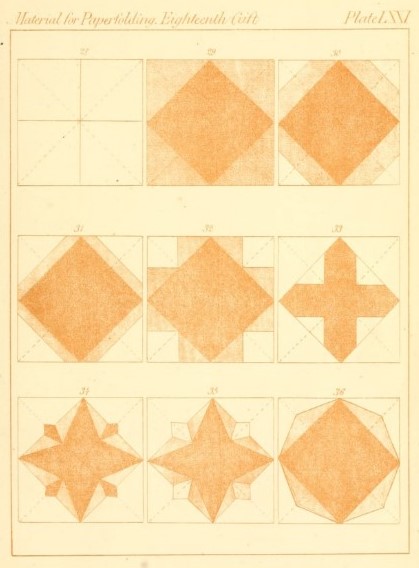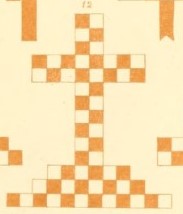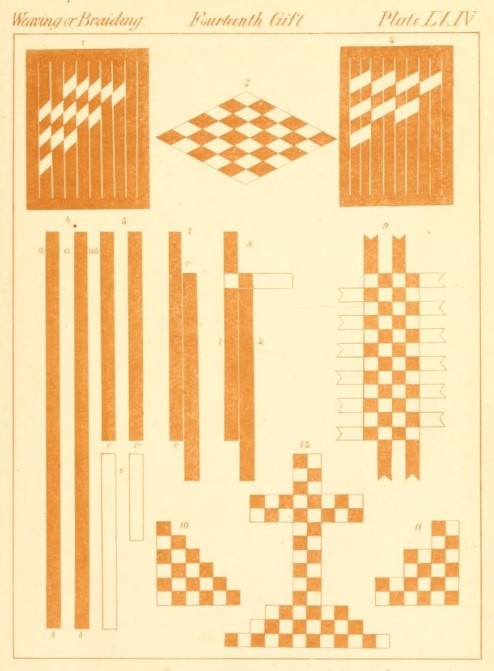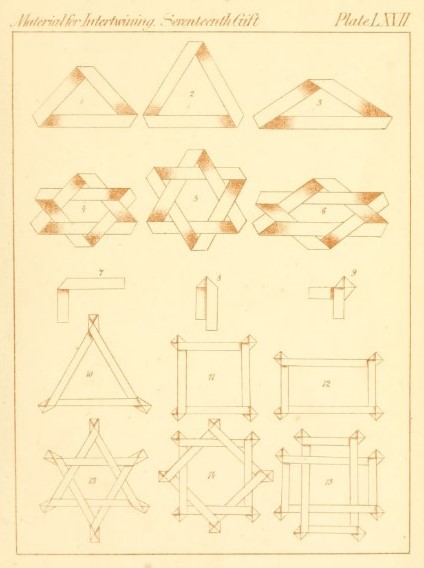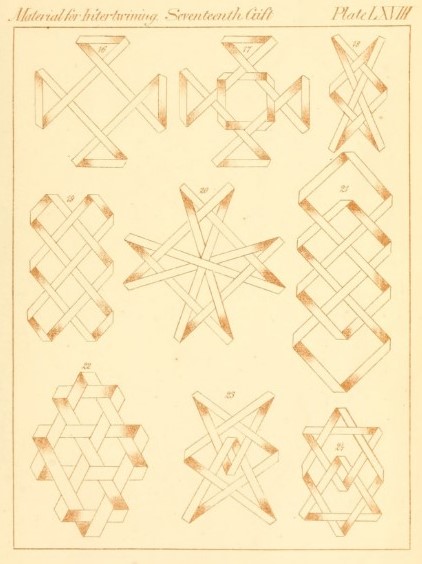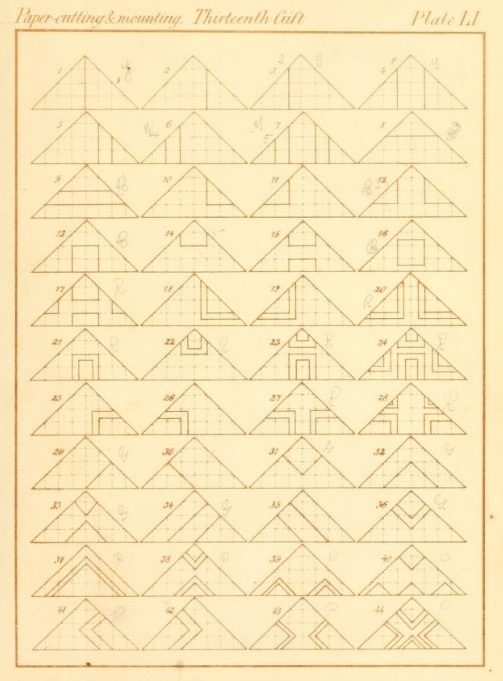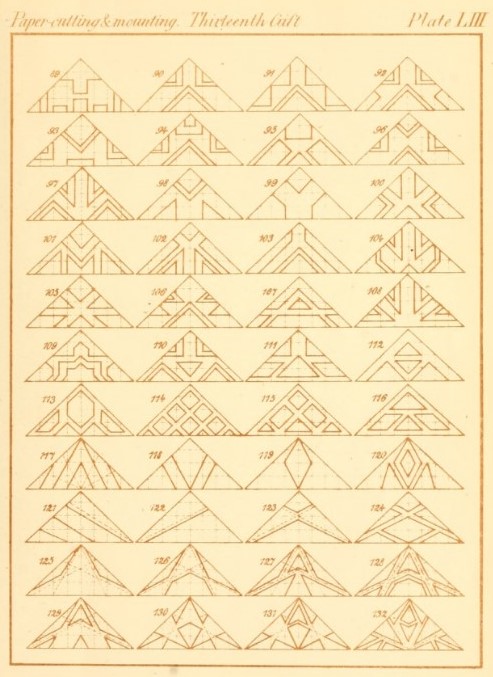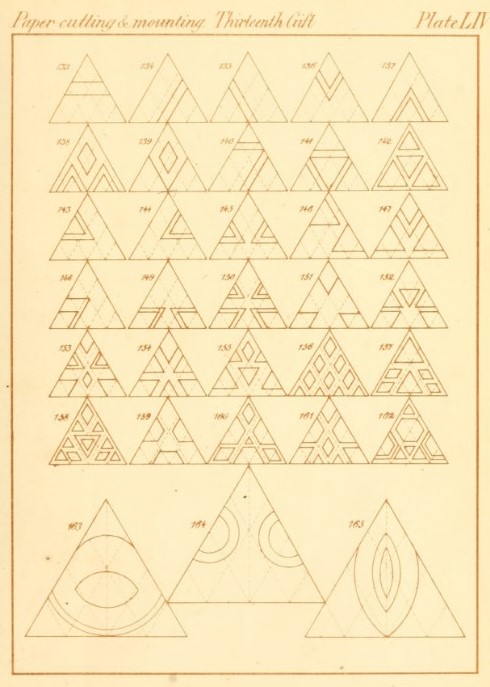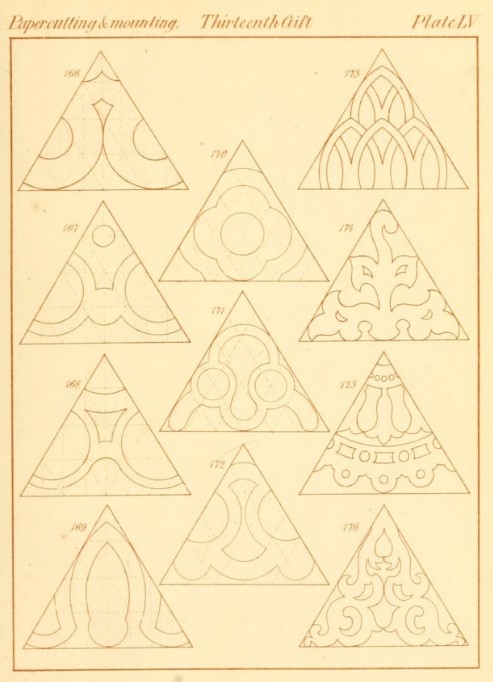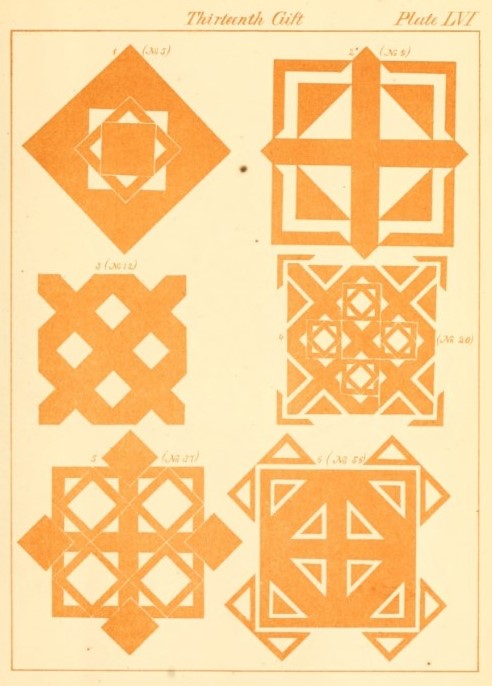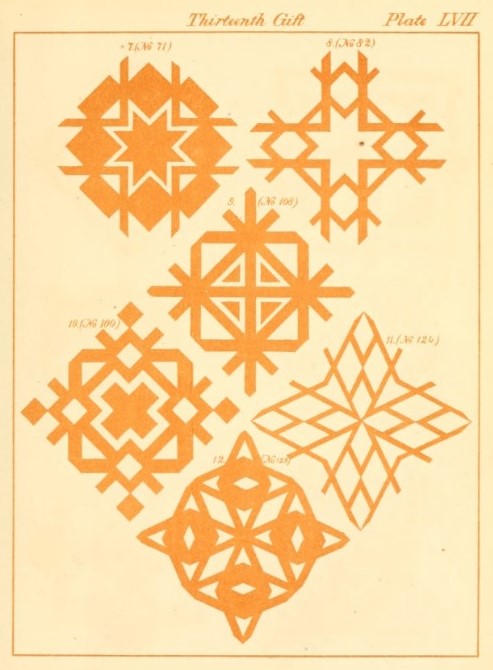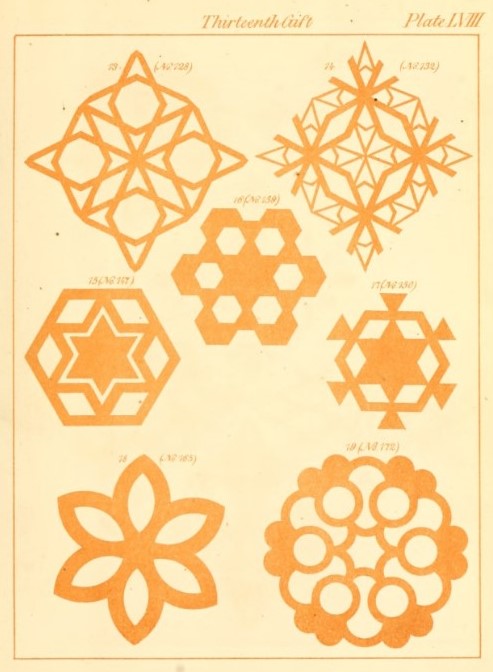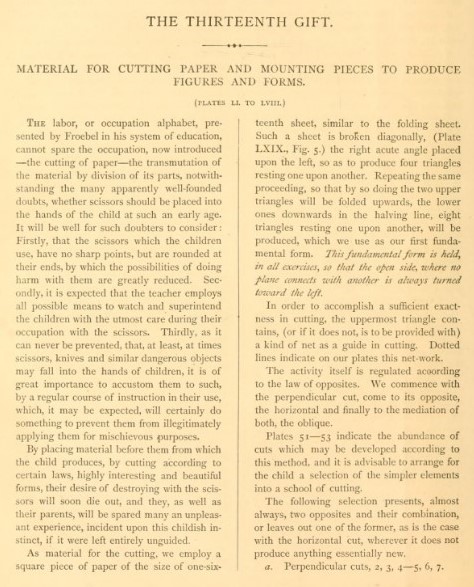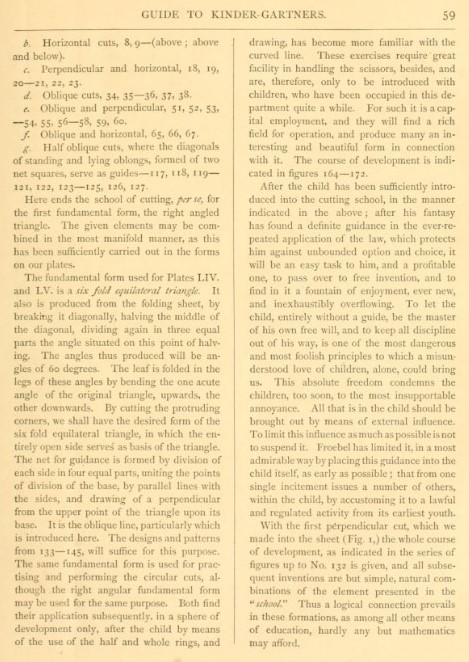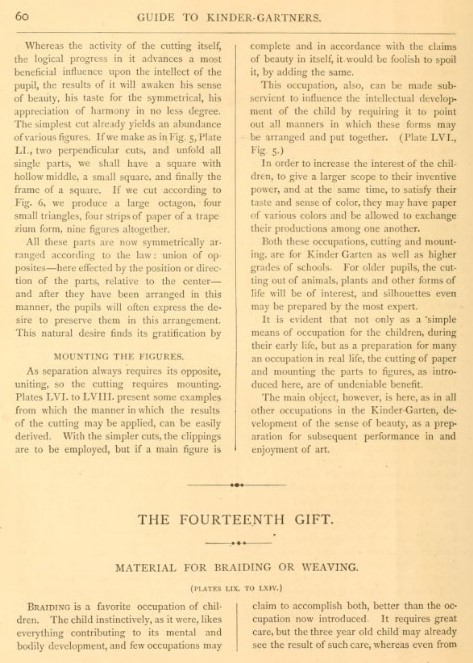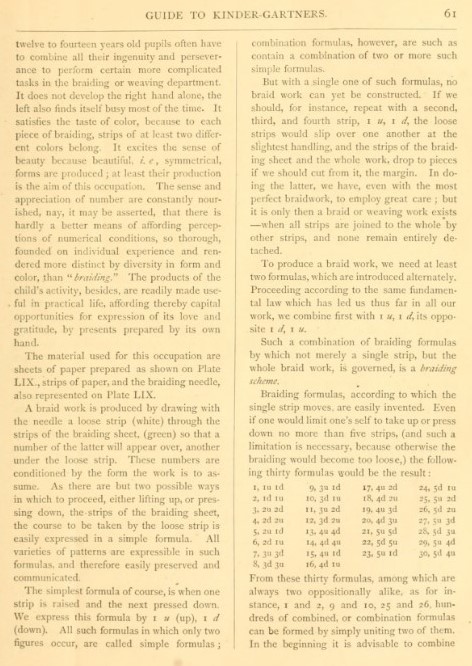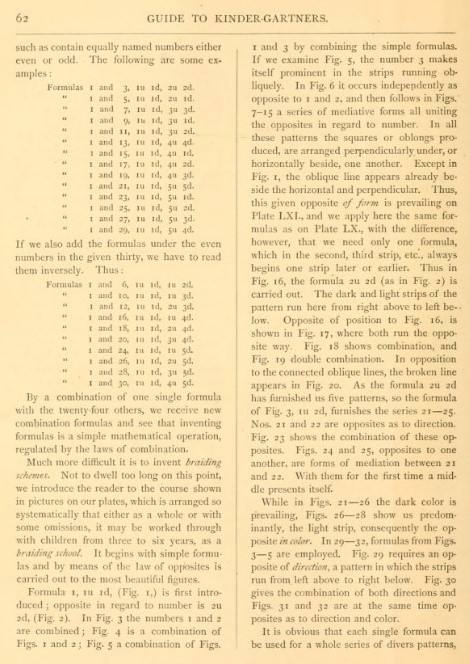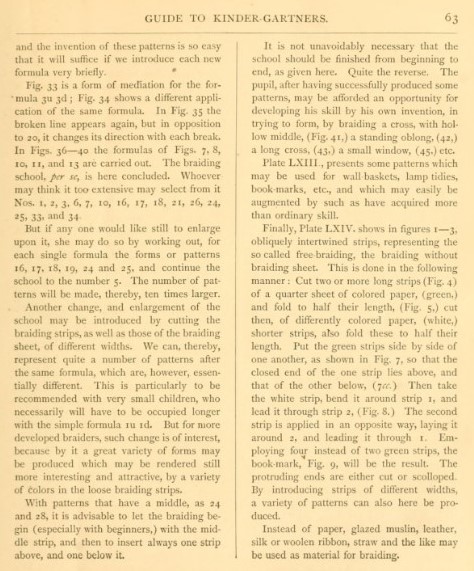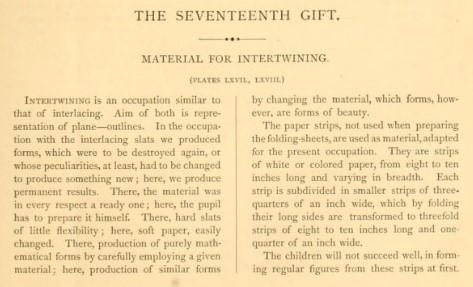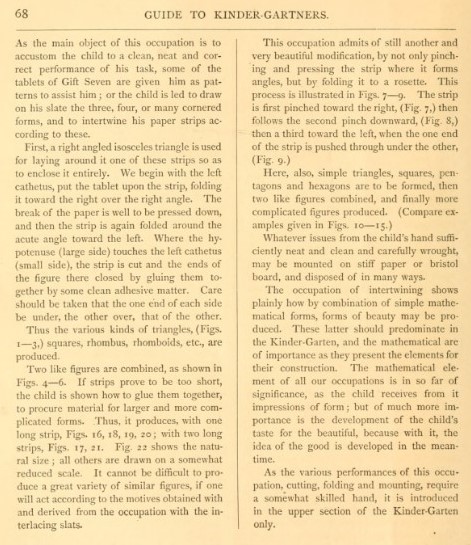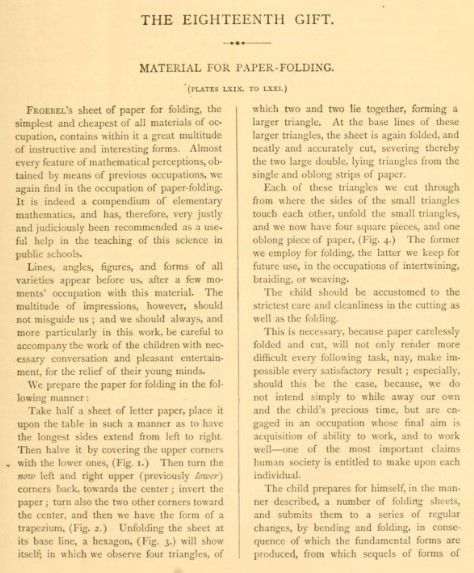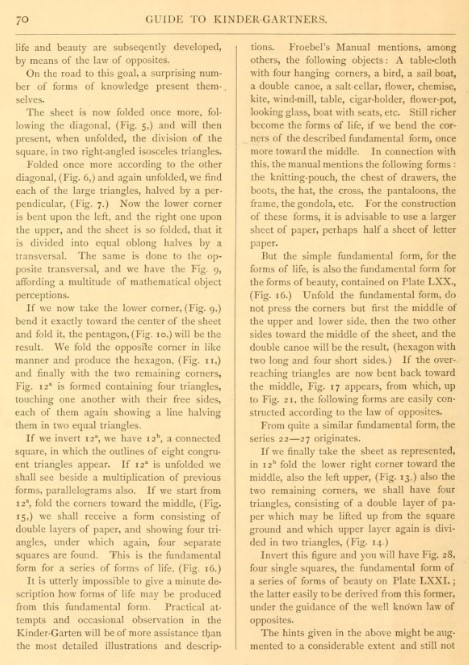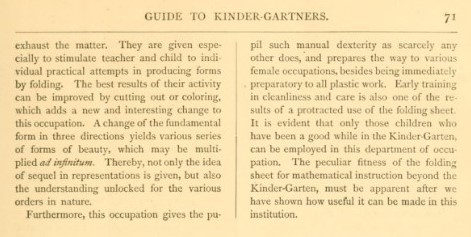| The Public Paperfolding History Project
Last updated 29/9/2025 x |
|||||||
| Paradise of Childhood by Edward Wiebe, 1869 | |||||||
| 'Paradise
of Childhood' by Edward Wiebe was published by Milton,
Bradley and Company in Springfield, Massachusetts in
1869. In his introduction the author says:
And acknowledges his sources:
The title is taken from Morgenstern's book. The vast majority of the text seems also to be taken from Goldammer's 'Der Kindergarten'. A full copy of the work can be accessed here. **********
********** Analysis Paper - Folding The author follows Goldammer in giving instructions for Froebel's method of cutting four squares from a rectangle and for some simple mathematical paperfolds, which he calls fundamental forms.
********** Forms of Life The author gives two lists of forms of life derived from the doubly blintzed and triply blintzed square respectively. These are similar to the lists in Goldammer, although not identical. There are no illustrations for these designs. Wiebe states that 'Froebel's manual mentions'. The equivalent passage in Goldammer simply refers to 'Das Manuel' without mentioning Frobel. I do not know which manual is being referred to here.
The designs mentioned are: From the doubly blintzed square: A tablecloth with four hanging corners - probably just a blintzed square. A bird - probably the Cocotte / Pajarita A sail boat - probably the Boat with Sail A double canoe - probably the Double Boat A salt-cellar - probably the Salt Cellar Flower - probably the Flat Flower Chemise - probably the Collar Kite - unidentifiable. (Possibly the kite from Lois Bates' 'Kindergarten Guide'. Goldammer has 'Drachen' in this position in his list.) Wind-mill - probably the Windmill Table - probably the Table Cigar-holder - probably the Cigar-case Flower-pot - probably the Vase Looking-glass - probably the Mirror Boat with seats - probably the Gondola From the triply blintzed square: The knitting-pouch - probably the Puzzle Purse. ('Knitting-pouch' is a translation of the word 'Strickbeutel' from 'Der Kindergarten' by Goldammer', also published in 1869, on which this present book is closely based. The 1874 edition of 'Der Kindergarten' contains an illustration of 'den Strickbeutel' which seems to be the Puzzle Purse.) The chest of drawers - unidentifiable. (This design is not listed in Goldammer.) The boots - probably the Pair of Boots The hat - probably the Hat / Shirt The cross - probably the Cross The pantaloons - probably the Trousers (by comparison with Goldammer) The frame - probably the Picture Frame The gondola - probably the Chinese Junk ********** Forms of Beauty Picture 16 of Plate LXX is simply a blintzed square. The text explains how to turn this into the double boat (although the flat version of the design is in fact the Cigar Case). Picture 17 is the result of folding the 'overreaching triangles' inwards (the shading is misleading - there is no colour change). Picture 18 shows the result of folding the 'overreaching triangles of the Windmill form inwards. Picture 19 is obtained by folding these front flaps in half. Picture 20 is obtained by then squashing the front layers and opening up for a genuine colour-change. Picture 21 is the reverse possibility. Pictures 22 to 25 and 27 show designs developed from the Windmill Base. Picture 22 shows Rosette 3, picture 23 shows Rosette 2, picture 24 and 25 appear to possibly show the same (unnnamed) design, while picture 27 shows what appears to be Rosette 2a. Picture 26 appears to be an anomaly and to be a pattern developed from a blintzed square or from the Double Blintz Basic Form.
********** Picture 28 shows one side of the Double Blintz Basic Form. Pictures 29 to 36 show a variety of patterns that can be developed from this side of this form.
********** Weaving or Braiding Plate LLIV includes a picture of the Woven Cross, although no reference to this design is made in the text.
********** Intertwining
********** Paper Cutting and Mounting Plates LI to LV show a variety of ways in which patterns can be obtained by cutting into a square folded into an eight-layered right angle isosceles triangle and a hexagon folded into a six-layered equilateral triangle. Plates LVI to LXIII show the patterns that result from some of these cuts when the design is opened out.
********** Source Pages
********** |
|||||||




